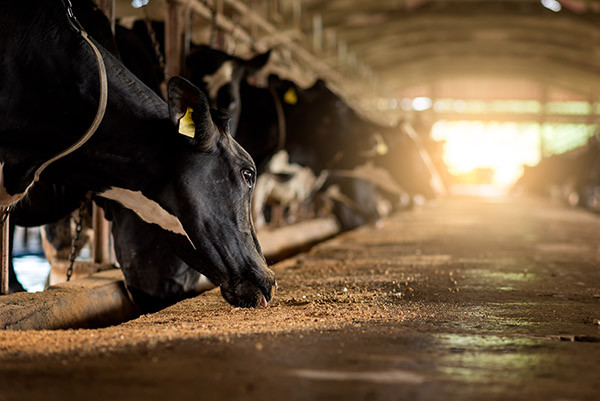Family dairy farmers face an uphill climb but have options to build efficiency
Many in the U.S. dairy industry have been through well-documented struggles in recent years. Some say dairy industry challenges are causing massive structural changes and edging out family farmers. Multigenerational dairy farms are indeed shuttering around the country as consolidation and market pressure force difficult and sometimes painful decisions when further expansion or diversification aren’t viable options. Whether it’s a natural evolution of the dairy marketplace or a consequence of industry changes, it’s a painful process affecting thousands of farm families around the nation.
At the other end of the dairy production spectrum, the trend is the same as in many sectors of agriculture. The big are getting bigger, and consolidation is changing industry dynamics, with fewer larger producers occupying a higher percentage of the total marketplace. With those changes come new efficiencies typical of growing economies of scale, ultimately making it impossible for small and mid-sized farmers to compete in commodity dairy production.
It’s an insurmountable convergence of circumstances for many farmers, however it’s nowhere near time to throw in the towel. Though the responsibility spans all industry stakeholders well beyond the farm gate, there are steps producers can take to better weather current dairy industry challenges.
In some cases, working with other industry stakeholders, producers can overcome current challenges and take steps to regain marketability in the face of things like consolidation, high cost and uncertain demand. There are variables from the farm to the supermarket dairy case that influence producers’ profitability. We’ll discuss three of these that shed light on ways farmers and others in the dairy supply chain can adjust and evolve to sustain a secure, quality supply of dairy products to consumers in the U.S. and abroad.
- Automation and other technological advances
A major challenge facing the dairy industry today is supply, and the problem is exacerbated to an extent by technology. Modern dairy farmers are good at what they do — almost too good — and tools like robotic milkers and other forms of automation have helped producers grow efficiencies, while modern genetics and breeding have yielded higher-producing milk cows.
Much of that technology is aimed at increasing output. But in a time when supply is consistently high and exerting downward pressure on market prices, there are ways technology can potentially help smaller dairy farmers compete from a cost efficiency standpoint. Are there ways to select dairy cows for improved feed efficiency, for example? It will be the responsibility of dairy genetics, technology and equipment providers to come up with new solutions to provide what dairy farmers need to become more efficient and productive in ways that won’t further contribute to an ongoing supply glut. And it will be the producers’ responsibility to adopt those innovations to help create a more sustainable marketplace.
- Streamlined production logistics
Price control as a function of vertical integration is one of the drawbacks of wide-scale dairy consolidation. Many say the economies of scale of large corporate dairy farms today prohibit smaller dairy farms from competing on a cost basis. But are there changes that small and mid-sized dairies can make to improve efficiency and compete from a cost standpoint? Some of those changes are considerable, like relocating farms to areas where feed is less expensive and more plentiful. Being geographically closer to other infrastructure critical to maintaining a herd is another way to cut operating costs in the long term.
Additionally, can a farmer cut costs by locating his or her operation closer to a milk processor? They’re costly endeavors, yes. But if they yield the kind of efficiency that can promote more cost-competitive operations in the long run, they are worth considering as ways to keep family dairy farms alive. Despite their significance, they’ve proven effective for dairies that have relocated sometimes long distances in the last two decades.
- Attention to shifting consumer demand
Regardless of what dairy farmers and their input providers may do to get more efficient and cost-competitive, other sectors of the dairy marketplace can contribute to overall profitability. Per capita fluid milk consumption in the U.S. has been falling since the 1970s. The decline in the last four years alone has been to the tune of 6% per year. Now, alternatives derived from almonds and other sources put even more pressure on milk demand. Consumers simply have a wider array of choices.
It’s not all negative pressure from the consumer side; in the last decade, products like yogurt, butter and some cheeses have seen a resurgence in consumer demand. That demand isn’t entirely offsetting the fall in milk consumption, but it shows consumers still want dairy products.
It’s the whole dairy industry’s responsibility to determine how to best meet that demand in the U.S. and overseas. Producers need to produce the raw materials, but processors and retailers need to offer the products that are in high demand. Industry stakeholders like trade associations can help bolster demand by demonstrating the positive attributes of dairy products to consumers. All efforts will need to be tied directly to consumer demand, whether it’s responding directly to current trends or creating new demand for specific products.
The dairy industry is in the midst of a challenging time, with shifting consumer demand and farm consolidation leading many small and mid-sized dairy farms to shutter. It’s a difficult situation to watch, especially when it means multigenerational farms can’t continue to operate because of shrinking margins. The right combination of adaptation, technology and industry actions can help create a more sustainable marketplace. That effort will take cooperation across the dairy supply chain, and ag financing is a key variable in that equation on the production side. At Conterra Ag Capital, agriculture is our livelihood too, and we support a strong, sustainable dairy industry. Find out how we can contribute to that and explore our real estate lending options here.

